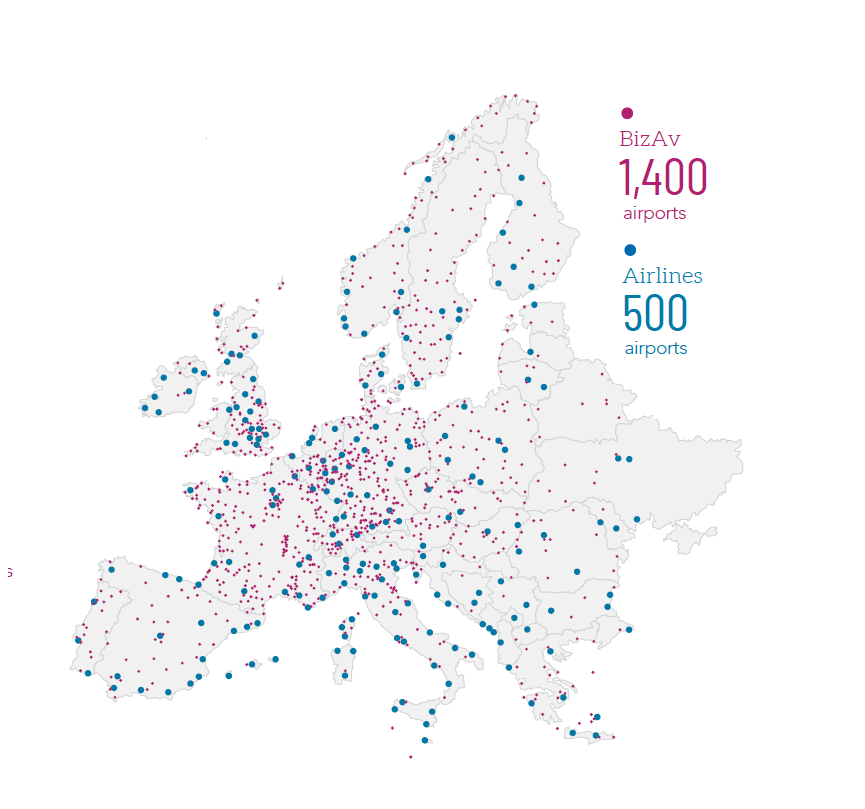We fly where others don’t
Business aviation is a specialised travel solution enabling people to meet face-to-face when time matters most. It allows passengers to have full control over their schedule and travel to at least 3 x more destinations in Europe than scheduled airlines. In the process, Business aviation connects many small European communities and local airports, improving connectivity across Europe.
Business aviation also provides life-saving air transportation in times of public need, including fire and rescue and medical evacuation services. It represents an essential transportation link for communities without scheduled airline service.


